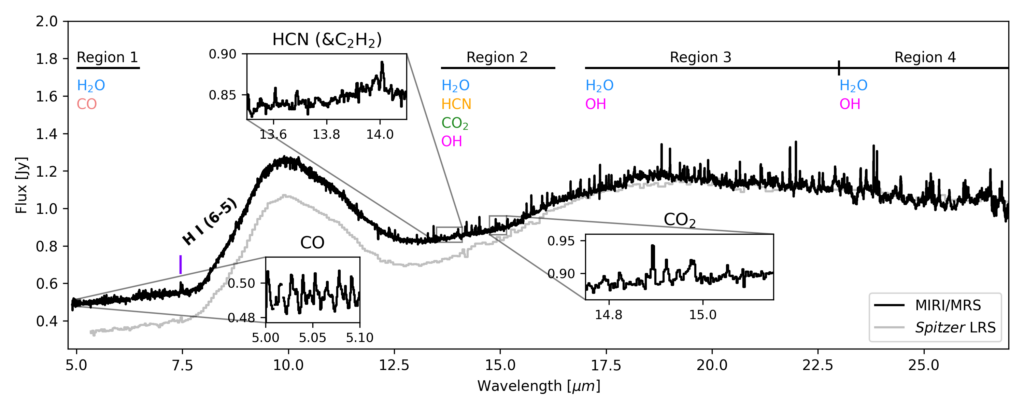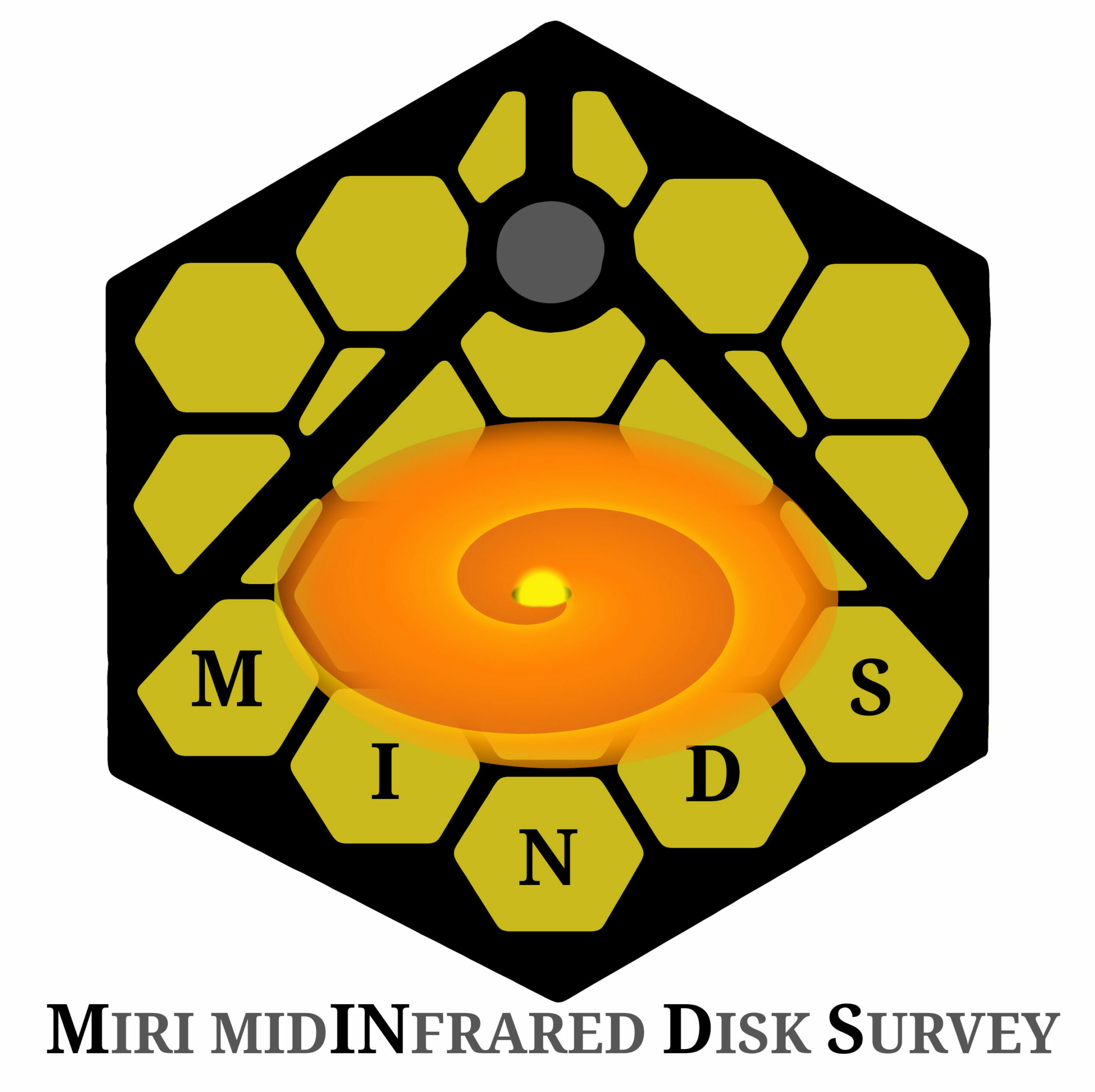MIRI/MRS on board the JWST allows us to probe the inner regions of protoplanetary disks. Here we examine the disk around the classical T Tauri star Sz 98, which has an unusually large dust disk in the millimetre with a compact core.

We focus on the H2O emission through both its ro-vibrational and pure rotational emission. Furthermore, we compare our chemical findings with the outer dust disk structure obtained from Atacama Large Millimeter/submillimeter Array (ALMA) observations. In order to model the molecular features in the spectrum, the continuum was subtracted and LTE slab models were fitted. The spectrum was divided into different wavelength regions corresponding to H2O lines of different excitation conditions, and the slab model fits were performed individually per region. We confidently detect CO, H2O, OH, CO2, and HCN in the emitting layers.
The isotopologue H218O is not detected. Additionally, no other organics, including C2H2, are detected. This indicates that the C/O ratio could be substantially below unity, in contrast with the outer disk. The H2O emission traces a large radial disk surface region, as evidenced by the gradually changing excitation temperatures and emitting radii. The OH and CO2 emission are relatively weak. It is likely that H2O is not significantly photodissociated; either due to self-shielding against the stellar irradiation, or UV-shielding from small dust particles. The relative emitting strength of the different identified molecular features point towards UV-shielding of H2O in the inner disk of Sz 98, with a thin layer of OH on top.
The majority of the organic molecules are either hidden below the dust continuum, or not present. In general, the inferred composition points to a sub-solar C/O ratio (<0.5) in the inner disk, in contrast with the larger than unity C/O ratio in the gas in the outer disk found with ALMA.
Scientific article
MINDS. Abundant water and varying C/O across the disk of Sz 98 as seen by JWST/MIR. By: D. Gasman et al. In: Astronomy & Astrophysiscs, November 2023. [original, preprint]
